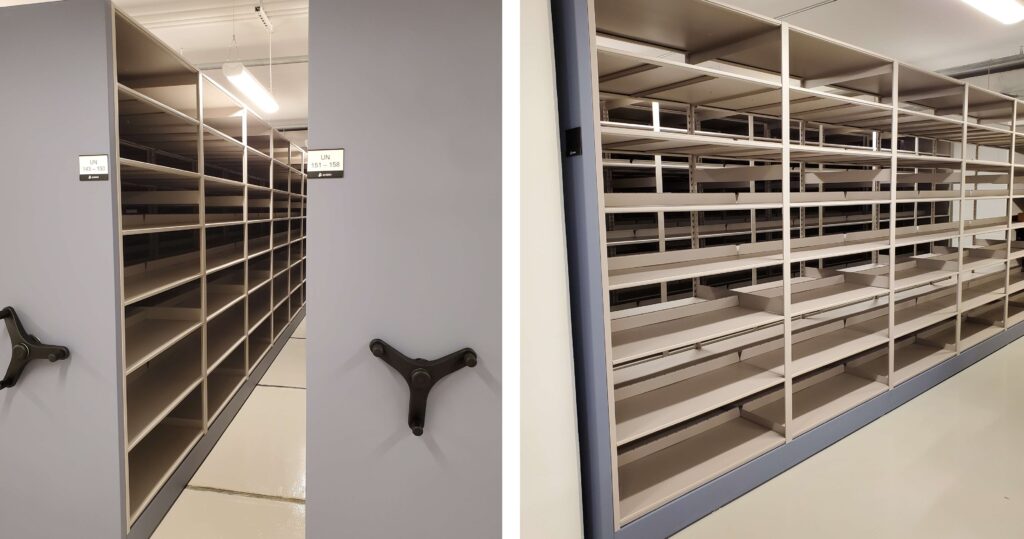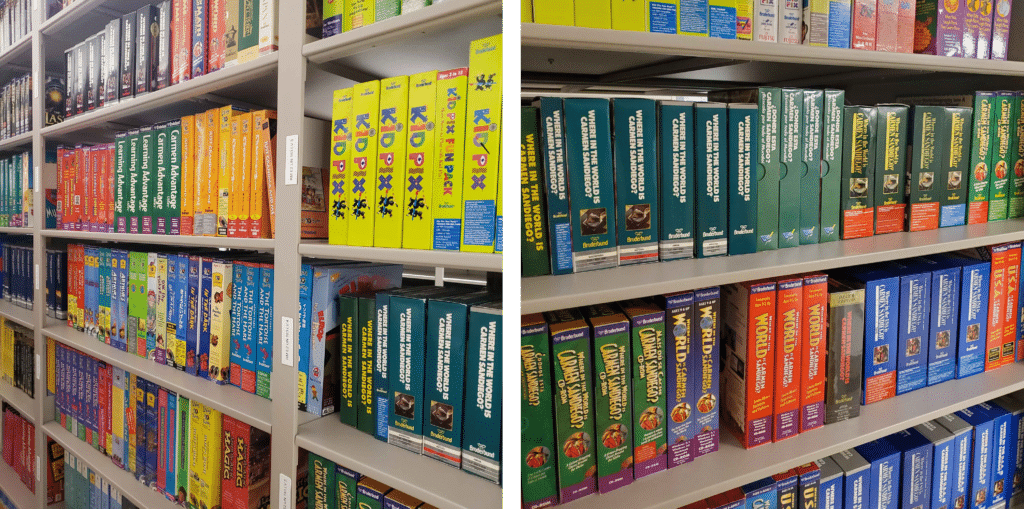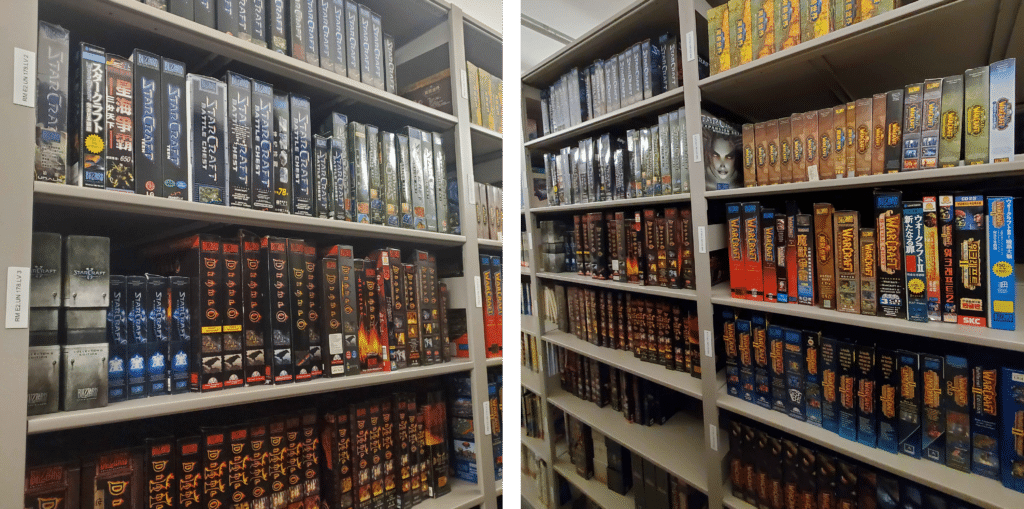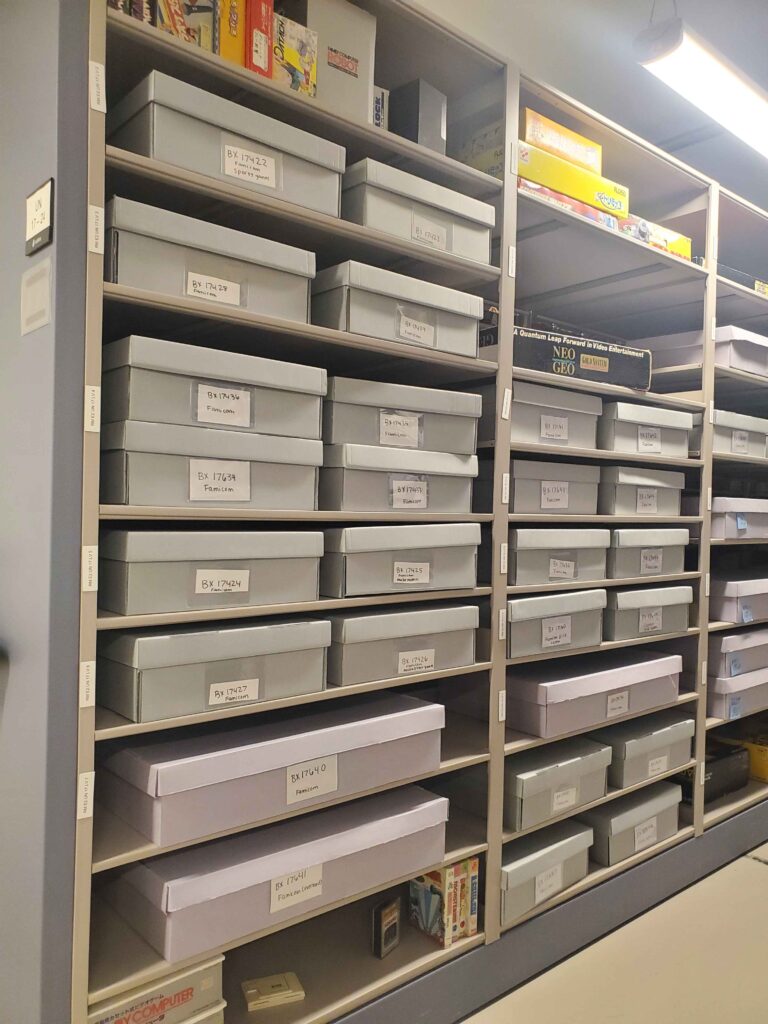The summer of 2023 brought a massive 90,000-sq.-foot expansion to The Strong National Museum of Play. This transformative space included three major exhibit spaces, an outdoor game park, as well as other new and improved programs and spaces to enhance the museum and build its capacity for the years ahead.
Among the aforementioned updates, to me, some of the most exciting changes are those that occurred strictly behind the scenes. A brand-new vault to store both archival materials and electronic games and video game-adjacent objects has been where a large chunk of my time and work has gone over the last year and a half.

Previous to the addition of the newly created vault—named affectionately E2—Strong Museum curators had access to two other large collection storage spaces, both existing on opposite ends of the building. Centralizing the collection, both in terms of content and collection, has been a major undertaking for me the last few months. The general flow for acquisitions has been as follows: catalog object, have object photographed, place object on a numbered shelf, and update the location of the object in the museum’s database. All of these steps remain the same, only now a major improvement has been made possible with the acquisition of extra space: the ability to group like objects together more easily.

For example, back in 2014, Doug Carlston, the founder of Broderbund Software, donated examples of more than 1,600 of the company’s games to us. Without open contiguous shelves to accommodate all those games, previous curators stored them wherever space permitted, with the result that they were often located on scattered units, unassociated with other Broderbund products. Through querying the collections management database, they could all be found but hardly conveniently. Not only was a physical search time-consuming, but browsing a category in storage was just about impossible. Picture a library where the biographies were randomly shelved with cookbooks and mysteries and you can imagine our frustration.
Now multiply that challenge by the more than 50,000 video games and related objects that The Strong has amassed over the years, and you can get a sense of the organizational challenge we were confronting. Inspired by the opportunity that the E2 storage space provided, I began to remarry some of our more impressive acquisitions, such as the Broderbund donation, one from Blizzard and, of course, our more than 7,000 Japanese video games.


2025 will be a year of continuing to group together consoles, computer hardware, and other similar collections, organizing them in this new space to make it not only attractive at first glance but, more importantly, intuitively findable. This scheme has been a win-win for the other curators as well, since moving the video games to E2 frees up much needed space in other storage spaces where board games, toys, dolls, and other playthings need their own dedicated real estate.


